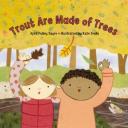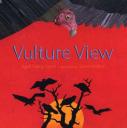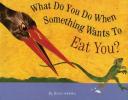Students in the 3rd grade use the food chain model to understand the relationships of living things and their dependence on each other for survival (VA Science SOL 3.5). While the food chain provides links to a basic flow of relationships, the food web, a more complex structure is used in the 4th grade to further explore this web of interdependence among living things (VA Science SOL 4.5). Below you will find resources, including lesson plan ideas, activities, literature, and interactive games that can be used to help motivate students and reinforce content.
BOOKS
Trout Are Made of Trees, written by April Pulley Sayre is geared for ages 4-8. This fun book introduces the food chain by using the river ecosystem to show how leaves are eaten by critters which in turn are eaten by the trout.
Vulture View, another book written by April Pulley Sayre for grades K-5 shows the important role of scavengers and decomposers in the ecosystem through the eyes and life of a vulture. It shows how the vulture breaks down dead organisms to provide nutrient for the soil.
The Story Goes On, a book written by Aileen Fisher for ages 4-8 shares the ongoing cycle of life. It begins with a seed that gets eaten by a bug which then gets eaten by a frog. The story goes on to show the links from a frog, a snake, a hawk, a hunter, and then back to a seed.
What Do You Do When Something Wants to Eat You, written by Steve Jenkins is geared for ages 4-8. This vibrant book can be used to discuss some of the unique and interesting ways animals are able to defend themselves from their predators.
Pass The Energy, Please! by Barbara Shaw Mckinney is written for grades 1-5. This book uses rhyme and teaches children about both the food chain and food web in a simple and entertaining way.
ONLINE GAMES AND ACTIVITIES
Kid’s Corner– This is an activity that allows children to build food chains by dragging parts into their appropriate place. When the chain is complete, it comes to life and students are able to see the food chain in action.
Woodland Life– This activity allows students to locate living things in the woodland, learn a few fun facts about each including its predator and diet, as well as build a food web using the things found.
Sunny Meadows This site provides an overview of the food chain and then allows you to play a game to simulate what would happen in the meadow depending on how many predators, prey, and plants that are added. The animals will increase, decrease, or even disappear through the years depending on its food supply.
Gould League Food Web This site allows you to choose from four different food webs. Students categorize living things that are displayed as producer, omnivore, etc. based on their diet. When the chart has been completed, the food web will be displayed.
Virtual Owl Pellet Dissection– This online activity allows students to dissect an animal pellet. Students use the bones that are found to recreate the animal that has been eaten.
TEACHER RESOURCES
Decomposers and Scavengers -This site includes facts, pictures, a quiz, and a lesson plan on decomposers and scavengers.
Worksheets -This site includes free downloadable worksheets and activities for helping students with vocabulary, classification, etc.
Class Activities/Handouts– Here you can find interactive games, activities, as well as handouts for practicing food webs.
Activities/Lesson Plans -This site provides a number of activities and lesson plans on the food chain/web theme.
Lesson Plans-This site includes background information as well as a number of lesson plan ideas for teaching food chain and food web.





